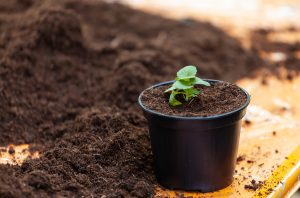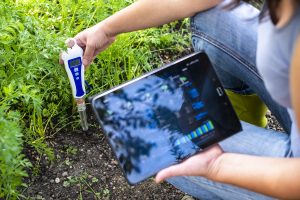Any grower who wants to cultivate their own high-grade homegrown cannabis must pass a few milestones before that becomes an opportunity. one in all those milestones is having the ability to check the pH (the ‘p’ is often the lower case) of the water you’re giving your plants. If you grow in soil, DWC, aquaponics, coco coir…it doesn’t matter! Cannabis plants want properly pH’d water despite how trivial (or annoying) the task could seem to us, humans!
Strips that measure the pH will get the work done, though pH drops are a much better choice. However, today we’re visiting to speak about another option: the pH pen. We’ll show you ways to use them, then ones we use, and we’ll even re-examine the categories of growers the pH pen is really good for.
Note: Don’t accidentally get a “TDS Pen” if you wish a PH Pen! They often look similar but they are doing not measure the identical thing!
This is a pH Pen!
3 three cheaper pH pens from 3 different companies besides being called ‘pH pens’, they’re also called pH meters or pH testers. They don’t all necessarily appear as if these ones, but this is often a general idea. you’ve got a ‘business end’ with an ‘electrode’ on the top that’s replaceable on many models. The electrode sounds like a little glass ball on the very end; it can’t stay dry for long! the opposite end is that the part the user holds, and it contains the screen, buttons, and just about everything else that creates the pen work.
pH pens do the precise same job as pH strips or drops, but they’re rather more precise. rather than getting a broad pH range from your tester, a mid-level pH pen can offer you a measurement all the way down to 2 decimal places with +/- .1 accuracy. during this case, that may mean that you just could measure the pH of some water and acquire a reading of 5.85 and know that at the worst the pH is admittedly 5.75 or 5.95. Luckily, when you’re growing cannabis precision at that level isn’t entirely necessary though it’s nice to possess if you wish it.
PH pens tend to run on (multiple) watch batteries; luckily their batteries are pretty cheap if you look within the right places and that they tend to last for an extended time. As long as you create a guaranteed to shut down the device as soon as you’re done using it, the batteries can last for years.

Additionally, all pH pens must be calibrated to make sure that they’re taking accurate measurements. For an accurate pH pen, you’ll need two calibration solutions, a storage solution, and a cleaning solution. the quantity and price of the solutions tend to daunt some growers, but they’ll all last for an awfully very long time when used sparingly. That being said, any grower looking into getting a pH pen should bear in mind that these extra solutions substantially raise the worth of starting out with pH pens. If you get a less expensive pen (like my favorite model), the solutions can cost the maximum amount as or over the pen itself!
pH Pen vs. TDS Meter vs. PPM Meter vs. EC Meter
We get questions from growers who aren’t sure what the differences are between a pH pen and therefore the other tester pens available. Here’s a fast run-down of what these pens really are:
pH Pen – Measures the pH (acidity or alkalinity) of a liquid
TDS meter – Same thing as a ppm meter. Measures Total Dissolved Solids, or what proportion stuff is in a very liquid. TDS meters measure in ppm (parts per million).
PPM Meter – A ppm meter is another name for a TDS meter.
EC meter – Measures Electrical Conductivity of a liquid. EC meters are to TDS/PPM meters what the imperial system is to the metric system; ppm is way more widely employed in the cannabis world.
In short: pH pens check how acidic or basic your water is. TDS/PPM meters check what proportion stuff is in your water. EC meters also check what proportion stuff is in water but isn’t as frequently utilized in the growing world.

Who Should Use a pH Pen
A pH pen is an awesome tool for several growers; I exploit mine almost exclusively now rather than drops. However, not every type of grows needs the sort of precision a pH tester offers. Here are some things to contemplate before getting a pH pen for your next grow.
A soil tester in some…well, soil. Soil grow
For a soil grow, especially if you’re using amended soil, a pH pen probably won’t do much good as you hopefully have a system of microorganisms already taking care of the duty.
If you’re using soil as a medium and feeding nutrients throughout the grow, you would possibly have to check the pH a touch more. Luckily for you, there are meters that check the pH of the soil while sitting in it. this can be reasonably convenient thanks to checking the pH of your soil, and lots of those devices will simultaneously check your soil for moisture content in addition to the temperature.
Coco coir/peat/perlite/vermiculite combos
A pH pen is by no means necessary for growers using this kind of medium. In fact, we might suggest that first-time growers using this sort of medium hold off on employing a pH pen for a minimum of one grow. Using strips or drops the primary time around gives more room for variation and is sweet for learning how plants react. pH pens are good for growers during this medium if they’re trying to fine-tune their growth or move a pesky problem that may be pH-based.
How to Use a pH Pen
Alright, so if you’re sitting there and you have already got a pH pen, otherwise you want to work out how they work…it’s pretty simple! There are three main parts of employing a pH tester. Fortunately, the primary part only has to be done every once during a while – once each week is over enough for a working pH pen.
Calibration
The display of a calibrating pH penCalibrating your pH pen to create sure it stays accurate is far and away the foremost off-putting a part of owning a pH tester of any type. If you’ll get past this small task, you’re set!
To ensure your pH pen is giving accurate readings, you would like to own it test something with a known pH. Generally, you’ll test a liquid at 4.01(or 4.0) and 7.01(or 7.0); some will recommend you furthermore mght test at 10.01, but that step isn’t needed.
If you test a liquid and therefore the reading is off, you’ll have to adjust your pH meter to match the liquid it’s testing. Some pH pens will must be manually adjusted, like with a dial you’ve got to show, or buttons to press. Other testers can automatically calibrate themselves once within the appropriate mode, but you generally pays noticeably more for this feature.
Manual Calibration
First, check the manual that came along with your pH pen for specific instructions.
Pour some 4.01 testing solution into a clean container. this can be therefore the remainder of the 4.01 solution doesn’t get contaminated.
Turn on your pH pen and place the electrode into the 4.01 solution you poured out. If the reading is anything than 4.01, turn the acceptable dial (or press the suitable button) until the screen reads 4.01.
Gently clean the electrode with a towel and repeat steps 2 and three with the 7.01 testing solution.
You’re done! try this again in a very week to confirm accurate readings. If it feels stable after many tests, you’ll be able to calibrate less often. It’s also an honest idea to try and do it sooner if you are feeling the readings you’re getting don’t seem right. Trust your gut!
Be careful to not damage the sensitive sensor on your pH pen!
Automatic Calibration
This will usually take a sequence of button presses, so you’ll want to consult the manual for your pH pen for this.
When you do automatic calibration, the pen will have you ever dip the electrode in 4.01 and 7.01 pH fluids. confirm to pour each of these fluids into separate clean containers therefore the remainder of the 2 solutions remain usable.
Measuring pH
This is the straightforward part where the pH pen finally gets to drag its weight. Just activate the pen and dip the electrode into the liquid you would like to check. detain mind that not all pH testers are waterproof, so don’t completely submerge any of them unless it specifically says it’s waterproof.
Take the protective get through your pH pen, and switch it on.
Place the electrode into the liquid you would like to check and leave it until the reading stays within a .02 range. Some pH meters may never stay still on one number, but as long because the number isn’t in an upward or downward trend, you’ll stop measuring.
This process is sped up by lightly swirling the electrode through the water. You don’t want to maneuver it fast enough to create any splashing in any respect.
Make sure you merely feed your plants water within the correct range
Hydro: pH of 5.5 to 6.5
Soil: pH of 6.0 to 7.0
Cleaning and Storage
Cleaning the electrode of the pH pen. Once you’re through with your pH pen, there’s one main rule to remember: never put your pH pen away with the electrode dry! Seriously…

Don’t put your pH pen away with the electrode dry. Dryness breaks electrodes!
Use a little amount of cleaning solution to launder the electrode. If a cleaning solution is unavailable, use water instead.
Pour a little amount of storage solution into the protective cap for your pH pen. confirm there’s enough to hide the electrode when the pen is placed in.
Place the pH pen in its protective cap so it stays nice and moist. Don’t forget to show it off to save lots of batteries!
That’s just about everything you wish to confidently handle pH pens, or a minimum of learning if they appear like they’re well worth the trouble for you.
–Blue lab Calibration solution.
–General Hydroponics calibration solution; you can’t really get it wrong with GH! If your pH pen doesn’t include calibration fluid, you’ll buy your own for cheap!
Keep your pH pen clean and wet with cleaning and storage solutions!
PH pens have electrodes that require to be kept clean and moist. H2O may be used for cleaning and storage, but specially made cleaning and storage solutions do a good better job and last an extended time if used sparingly. If you simply arrange to get one, get the storage solution, which may even be accustomed to help gently clean the electrodes.




